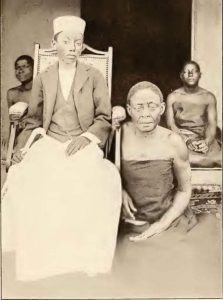Unraveling The Threads Of Polygamy: How Christianity Altered The Fabric Of African Culture
In Unraveling The Threads Of Polygamy, We Are Confronted With The Complexities Of Identity, Faith, And The Enduring Human Desire For Connection And Belonging.
Uganda Today Edition: Unraveling the Threads of Polygamy: How Christianity Altered the Fabric of African Culture
In the heart of African continent, where tradition intertwines with modernity, lies a tapestry of cultural heritage woven through centuries. Among the vibrant threads of this strata is the practice of polygamy, a cornerstone of many African societies. For generations, polygamy has been not just a social norm but a symbol of status, fertility, and familial unity. However, the arrival of Christianity brought with it a new narrative, one that challenged and ultimately distorted this ancient practice.

The beautiful Bahai Temple on Kikaaya hill, Kampala known as the Mother Temple of Africa
It is one of the many houses of worship for people of different religious persuasions in Uganda and signifies the religious heterogeneity and tolerance of the country
The temple was built in the late 50s and early 60s and sits on 52 acres of land
*#VisitUganda* 🇺🇬
*#ExploreUganda*
*#Tulambule*
+256 702 239 337
Email: cmkmediasolutions@gmail.com
In the days before the cross found its way to African shores, polygamous households were emblematic of harmony and cohesion. Imagine a sprawling homestead where each wife had her place, her domain within the larger family structure. Despite the shared husband, there was a sense of respect, camaraderie, and sisterhood among the co-wives. Each woman brought her unique strengths, talents, and perspectives to the household, enriching the lives of not just their husband but also each other.
Within the walls of these homes, children from different mothers grew up as siblings, bound not just by blood but by a shared upbringing and a collective sense of belonging. They played together, studied together, and supported one another through life’s trials and triumphs. The concept of half-siblings was alien; instead, they were all simply brothers and sisters, equal in the eyes of their parents and their community.
However, the advent of Christianity ushered in a seismic shift in societal values and norms. With missionaries preaching the doctrine of one man, one wife, the traditional fabric of African polygamous households began to unravel. Suddenly, a practice deeply embedded in cultural identity became vilified as sinful, immoral, and contrary to the teachings of the Christian faith.

The polygamous household, once a symbol of unity, became a battleground for jealousy, competition, and discord. Co-wives, once allies, now found themselves pitted against each other in a race for their husband’s affection and favor. Children, once united, now grappled with feelings of resentment and division as they navigated the complexities of half-sibling relationships.
As the influence of Christianity grew, so too did the pressure to conform to its monogamous ideals. Laws were enacted, social stigma intensified, and polygamous unions were pushed to the fringes of acceptability. Families were torn apart, relationships strained, and the once vibrant strata of polygamous culture began to fade into obscurity.

Yet, amidst the shadows of this cultural transformation, echoes of the past linger. In some corners of Uganda, polygamous households still endure, albeit in dwindling numbers. And while the harmony of yesteryears may seem like a distant memory, the spirit of brotherhood and sisterhood lives on in the hearts of those who remember a time when polygamy was not just a practice but a way of life.
As Uganda grapples with the clash between tradition and modernity, the story of polygamy serves as a poignant reminder of the delicate balance between preserving cultural heritage and embracing societal change. In unraveling the threads of polygamy, we are confronted with the complexities of identity, faith, and the enduring human desire for connection and belonging.









